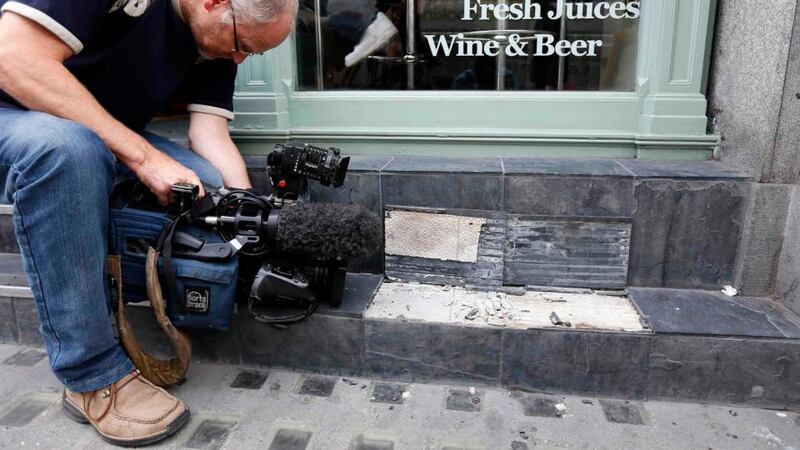The developers of a London skyscraper that reflects sunlight at such intense levels that it warped panels and melted mirrors on a parked car are looking at ways to solve the problem.
Land Securities Group Plc and Canary Wharf Group Plc are examining the phenomenon and, along with the City of London, have blocked three parking spaces around the building at 20 Fenchurch Street that may be affected, the companies said.
The glare from the skyscraper, whose nickname derives from its tapering rectangular design that is also responsible for the beam, has melted parts of vehicles.


The building’s concave design acts as a lens that reflects intense beams of sunlight for about two hours a day. It has become something of an attraction with international TV crews and reporters descending on the location.
“We are taking the issue of light reflecting from 20 Fenchurch Street seriously and are looking into the matter as a priority,” Land Securities and Canary Wharf Group said in their statement.
The light beam, which depends on the sun’s elevation in the sky, lasts about two hours a day at this time of the year, the companies confirmed. Preliminary modeling indicates it will be present for two to three weeks.
“We are consulting with local businesses and the City to address the issue in the short term while also evaluating longer-term solutions to ensure the issue cannot recur,” the companies said.
The developers may have to apply a finish to the outside of the glass that diffuses light rather than reflecting it at full intensity, said Koen Steemers, head of Cambridge University's department of architecture. "It probably wouldn't affect the transparency of the glass, but would slightly scatter the reflected solar radiation," he said.
The Walkie Talkie, designed by Uruguayan architect Rafael Vinoly, is due to be completed next year. Tenants have signed up to occupy 52 per cent of the building and contracts for a further 4 per cent of the space are awaiting legal confirmation, Land Securities said on July 17th. The building is popular with tenants from the insurance industry because it's close to the Lloyds of London building. Markel Corp, Ascot Underwriting Inc and Kiln Group Ltd have signed deals as tenants.
Motorist Martin Lindsay told the BBC he had left his car for an hour opposite the building and returned to find the wing mirror, panels and Jaguar badge had "melted".
“You can’t believe something like this would happen,” he said. “They’ve got to do something about it.”
It is not the first time a Vinoly building has been linked to intense rays of sunlight. The Vdara Hotel in Las Vegas allegedly produced intense areas of heat due to sunlight, according to reports in the US media three years ago.
Nobody was immediately available for comment at Rafael Vinoly’s London office on Tuesday.
Canary Wharf Group, which is majority-owned by Songbird Estates, is also building the 37-storey tower, which developers hope will be two-thirds full when it opens next year.
Agencies
















